Identifying the type of soil is vital to cultivate your land effectively.
By testing the soil, you’ll know what type of soil it is and whether you should take corrective action. Remember, there are four types of soil, each with varying characteristics. Soil type affects many aspects of plant growth, including drainage, nutrient availability, and pH levels. Knowing your soil type can make a huge difference in the success of your garden!
So let’s explore the fascinating world of soils together!
How many types of soil are there?
There are four main soil types: sandy, clay, silty, and loamy.
Sandy soil: Sandy soil is a type of soil that is made up of larger particles than other soils, such as silt or clay (80 percent sand and very little clay and organic matter). This type of soil feels light and gritty to the touch, making it easy to work with.
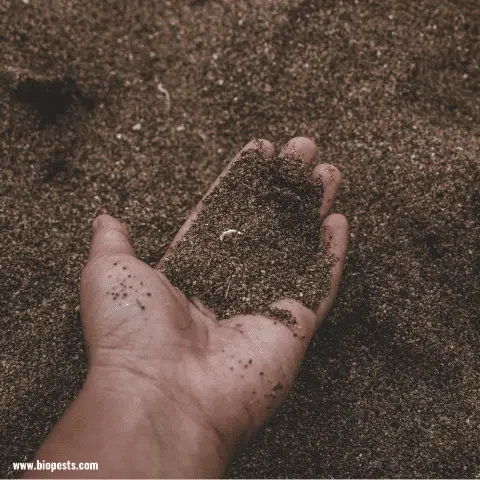
But what makes it so great for growing vegetables? Well, sandy soil is well-draining, which means it won’t hold onto water, causing it to become waterlogged and suffocate plants. Instead, sandy soil allows water to flow through it, ensuring that plants receive adequate amounts of oxygen. This makes it an ideal soil for vegetables that thrive in drier conditions, such as carrots, radishes, and sweet potatoes. So if you’re looking to create a vegetable garden that loves good drainage, sandy soil might just be the perfect choice for you.
Clay soil: this soil is made up of very fine particles that clump together, making it dense and heavy. This soil can be a bit tricky to work with, however, it has many benefits. One of which is that it holds onto moisture and nutrients better than other types of soil. This makes it ideal for growing certain vegetables, such as root vegetables like carrots, beets, and onions. When working with clay soil, it’s important to add organic matter like compost, which can help break up the dense soil and provide additional nutrients for your plants. With a little patience and hard work, you can cultivate a thriving garden in clay soil and enjoy a bountiful harvest of delicious vegetables.
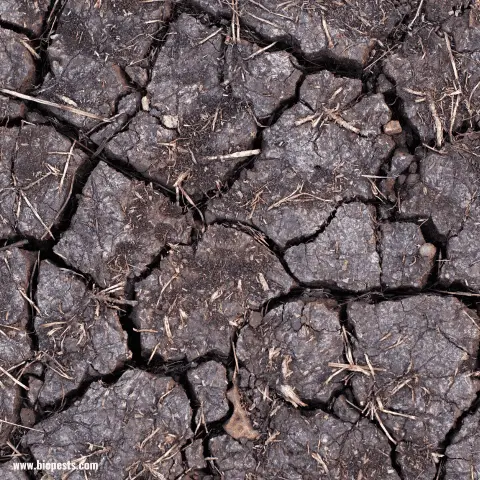
Silty soil: If you’re an aspiring gardener, you may have heard of silty soil before, but what exactly is it? Silty soil is a mixture of sand, clay, and silt particles. It has a soft texture and is easily compacted, making it perfect for growing a variety of vegetable crops. Some of the vegetables that thrive in silty soil include spinach, Kale, lettuce, and broccoli. The great news about silty soil is that it’s incredibly fertile and nutrient-rich, which means that you’ll get an abundance of delicious vegetables from your garden when you use it. So, if you’re looking to create a thriving garden, give silty soil a try! With its unique properties, you’ll be sure to see incredible growth and success in your vegetable garden.
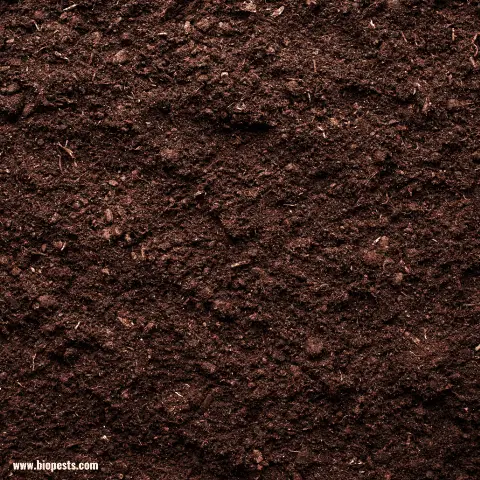
Loamy soil: If you’re like many people, you might not know exactly what loamy soil is – or why it matters. Happily, though, there’s a lot to love about this rich, nutrient-packed soil type. Loamy soil is made up of a combination of sand, silt, and clay, giving it just the right texture and composition to support healthy plant life. Some of the vegetables that thrive in loamy soil include carrots, cucumbers, and tomatoes, but really just about any plant will do well in this type of soil. So if you’re looking to start a garden or simply want to make sure that your plants are getting the most out of their environment, loamy soil is definitely worth considering.
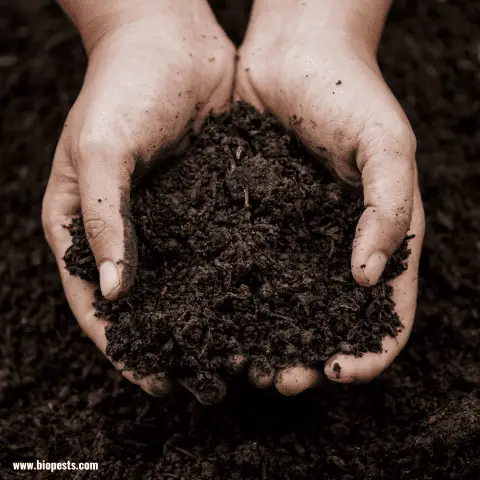
Understanding the different types of soil available is the first step to our success. Let’s give our plant the best possible start by amending our soil in 5 easy steps.
How To Amend Your Soil In 5 Easy Steps:
We can still achieve success with less-than-ideal soil conditions. Unfortunately, not all soil is perfect, whether it’s poor quality or incredibly challenging to work with. Here is a simple list of 5 easy steps on what we need to do to make the most of it!
1. Test Your Soil
The first thing to do is to identify the type of soil in your garden. Your soil pH levels will tell you how acidic or alkaline it is. Testing your soil is easy, affordable, and can even be fun! There are numerous testing kits available online or at your local garden center. Some kits involve taking samples from different parts of your garden and sending them to a lab for analysis. Other kits allow you to check the pH and nutrient levels yourself, right in your own backyard.
Check also your soil drainage. If you’ve ever had a plant or two (or more!) die unexpectedly, soil drainage issues may be the culprit. Luckily, checking your soil drainage is as easy as digging a hole and filling it with water. After letting the water drain completely, you’ll be able to determine how long it takes for the hole to empty. If it takes more than two hours, your plant’s roots may be sitting in water for too long, which can cause rot and other issues.
2. Loosen the soil using a shovel or rake
Loosening up your soil is a crucial step before making any amendments. Grab a shovel or a rake and give your soil some love. Not only will this help remove pesky rocks and weeds, but it will also improve air circulation in the soil. Get ready for healthier plants and a flourishing garden by starting with quality soil preparation.
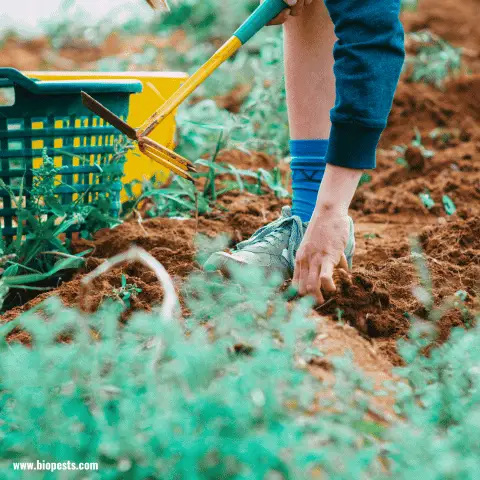
3. Adjust Soil PH Level By Adding Organic or Inorganic Amendments
Choosing the right amendment can make all the difference. Organic amendments, such as compost or manure, can improve soil health by adding beneficial microorganisms. They also provide a natural source of nutrients for your plants while improving the soil structure and increasing its ability to retain moisture. Inorganic amendments, like gypsum or lime, can adjust soil pH and improve nutrient availability (more about the use of gypsum in my article here). But how do you know which one is best suited for your specific needs?
It’s important first to assess your soil’s current condition and determine what you want to achieve with your amendment. Whether you’re looking to increase fertility, improve soil structure, or reduce pests and diseases, there’s an amendment out there that can help.
The first step in adjusting soil pH levels is to determine your current soil pH level. You can do this by using a pH meter or a soil testing kit. Ideally, the pH level should fall between 6.0 to 6.5 for most plants to grow well. If your soil pH is too low (acidic), the plants may not receive enough essential nutrients like nitrogen and phosphorus. Similarly, if the pH level is too high (alkaline), the soil may not retain enough nutrients, leading to poor plant growth. Once you have identified the pH level, you can take steps to adjust it to the required range.
Adding lime: Lime is a commonly used soil amendment to balance soil pH levels. Lime is made from ground limestone rock, which naturally contains calcium carbonate and magnesium carbonate. Adding dolomite or agricultural lime can raise the pH level of acidic soil. However, be careful not to add excess amounts, as it can lead to an alkaline soil pH, which is equally harmful to plant growth.
Adding sulfur: For alkaline soil pH levels, adding sulfur can help reduce the pH level. While there are several types of sulfur, elemental sulfur is the most commonly used form for this purpose. It’s essential to note that the results of the sulfur amendment may take some time to show, so it’s best to add it in small amounts.
Using organic matter: Organic matter, such as compost, can help improve soil pH levels naturally. The decaying organic matter releases acids, which help reduce alkalinity and decrease soil pH levels. It’s essential to use organic matter regularly to maintain healthy soil pH levels.
Choosing plants based on pH level: Another crucial aspect of maintaining healthy soil pH is to choose the right plants based on your soil pH level. Certain plants, such as blueberries and azaleas, require acidic soil to grow well. On the other hand, vegetables like cabbage and broccoli grow best in neutral pH levels
4. Mix All Amendments
After carefully selecting and adding the necessary soil amendments, it’s important to make sure they are all mixed together thoroughly. This process ensures that every inch of your garden bed is set up for success! Mixing the amendments well allows them to interact with one another, making for a nutrient-rich soil that is perfect for growing healthy plants. You can mix everything together in a large container using a garden fork or shovel. It’s important to take your time during this process to ensure that all of the amendments are evenly distributed throughout the soil. Although it may seem like a small step, it can make a big difference when it comes to the overall health and success of your garden.
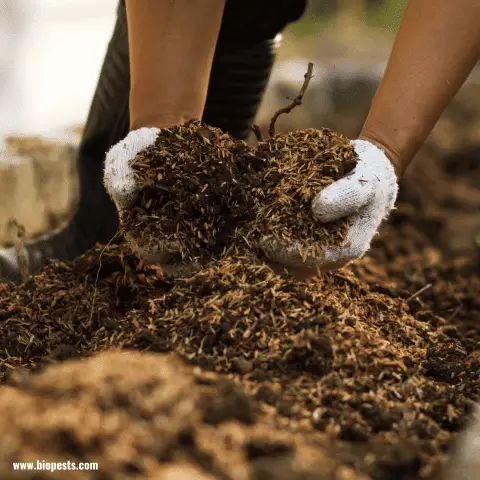
5. Water The Soil
Congratulations, you’ve mixed all the perfect soil amendments! But the job isn’t quite finished. To ensure that your amendments work their magic, it’s important to water regularly and let the soil sit. Don’t be too impatient to start planting right away – giving the soil time to settle will ensure that any remaining air pockets are filled and that the soil becomes uniform in texture. Proper watering is essential to allow the amendments to activate and the nutrients to break down, getting your soil ready for the next growing season. It may take a little time and effort, but trust me- the end result will be worth it!
Conclusion
After following these steps, your soil should be completely amended and ready to nourish whatever you plant in it! No more guessing if the nutrients are balanced. Instead, you can rest easy knowing that you prepped your soil properly for successful harvests. If you’re just starting out with amending your soil, take your time and feel free to start small. Good luck! Be sure to remember that even if you get the amendment ratio correct, you may still need to perform routine tests on the soil pH level throughout the season in order to ensure optimal growing conditions. Not all soils are created equally or tuned perfectly right away so be willing to put in some extra legwork if needed. And finally, if you did not get the harvest you were expecting, start testing your soil today and learn from your experience—it’ll ultimately help make future harvests much easier and more successful!
Some of the links above are affiliate links, meaning at no additional cost to you, I will earn a commission if you click through and make a purchase.
